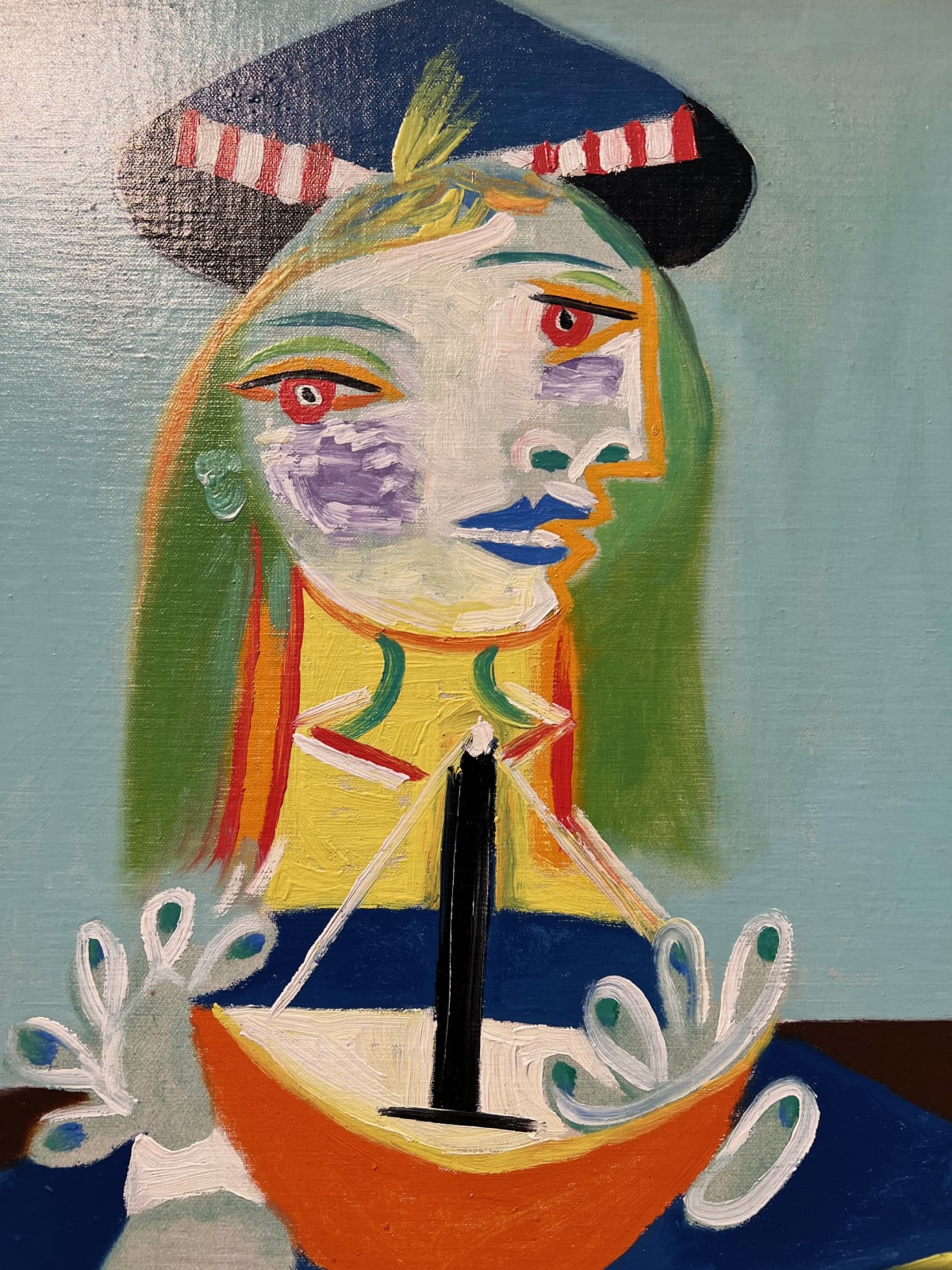Picasso’s "Fillette au bateau, Maya" is one of those paintings that tells you exactly what it is about within a few seconds. Painted on 4 February 1938, it shows his young daughter Maya seated with a toy boat, arranged in bright shapes and clear contours that feel close to a child’s way of seeing. The scale is domestic at roughly 73 by 60 centimetres, which suits the intimacy of the subject and the clarity of the composition.That date matters because it falls just after the intensity of 1937, when Picasso completed Guernica.
This picture reads as a private reset, swapping public drama for straightforward joy. The sailor cap, stripes and little boat create a simple anchor for the composition, while the face is built from readable planes and arcs. The effect is direct and affectionate rather than grand.
It also belongs to a compact run of portraits of Maya that Picasso made in 1938 and 1939. Looking at those works together helps to place this canvas within the group. The same crisp outlines, playful symbols and bold colour appear again and again, suggesting how Maya’s presence changed the mood of the studio and gave Picasso a fresh set of pictorial problems to solve.
Provenance strengthens the story. The painting stayed with Picasso until his death in 1973, which already counts for a great deal. It later entered the collection of Gianni Versace and was offered in London in 1999, establishing a public benchmark for a picture that had long lived in private hands. That history, moving from the artist’s own holdings to a well known designer-collector, gives the work a clean and memorable trajectory.
Market performance followed the narrative. When the canvas returned to London on 1 March 2023 in Sotheby’s Modern and Contemporary Evening Auction, it carried an estimate of twelve to eighteen million pounds and was offered with both a financial guarantee and an irrevocable bid. On the night it sold for £18,089,300 including fees, which is effectively the top of expectations and consistent with demand for strong, well provenanced portraits by Picasso from the late 1930s.
Stepping back to the picture itself, the appeal is plain. The toy boat ties the elements together, the sailor motif echoes it, and Maya’s stylised features keep the balance between play and portraiture. That balance is the reason collectors continue to gravitate to this part of Picasso’s output. It is immediate, legible and personal without needing any complicated reading, and it carries a record of care from studio to sale room that adds confidence.
References:
-
Sotheby’s press release: “Picasso’s joyful, tender portrait of his daughter Maya… comes to auction”
-
Sotheby’s lot page: Pablo Picasso, Fillette au bateau (Maya)
-
Sotheby’s sale round-up: “Kandinsky, Munch and Richter Lead the Charge in London”
-
Barron’s: “Picasso’s Portrait of His Daughter Maya Could Fetch US$15 Million at Auction”

